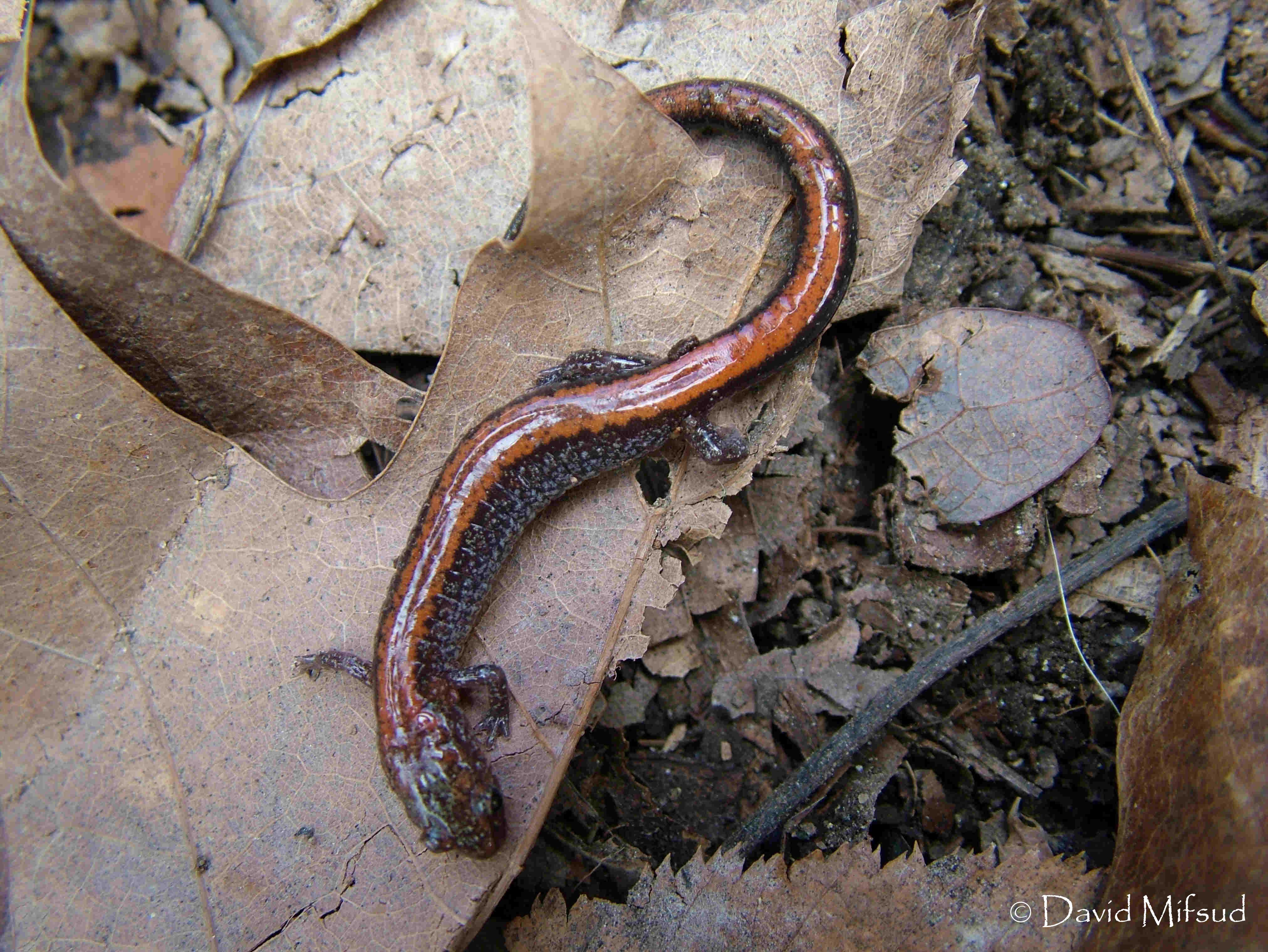
Plethodon cinereus
Natural History
This species has 2 color variations (lead phase and red phase) and does not have an aquatic larval stage. They inhabit deciduous forests except in areas prone to frequent flooding and areas with dry, sandy soils. They are often encountered hidden under logs, fallen bark, leaf litter, and rocks. Large numbers may congregate in preferred sites and may remain active during winter months. In years with deep frost penetration many are killed. They tend to occupy fairly restricted, temporary home ranges and can be territorial.
Reproduction and Growth
Males seek females in fall (October to December) but mating activity can occur into early spring. Females probably only breed every other year. This is probably due in part to the large energy cost of reproduction. Between 3-17 eggs are laid in early summer. Eggs are typically suspended from the roof of the nest cavity by a gelatinous stalk. Parental care is given to the developing eggs. To keep eggs moist, female uses skin secretions. Eggs hatch in 1-2 months and the young disperse when remnant gill buds are absorbed (1-2 weeks). Sexual maturity is reached in two years, and first eggs can be produce at beginning of their third year.
Conservation
This species can be very abundant where habitat is ideal. Population sizes between 200-3600 per acre have been reported. Loss of Red-backed Salamanders could have significant consequences for the forest environment. They are a tolerant species, and can survive in human-altered woodlands as long as critical habitat components remain.
Habitat Type
